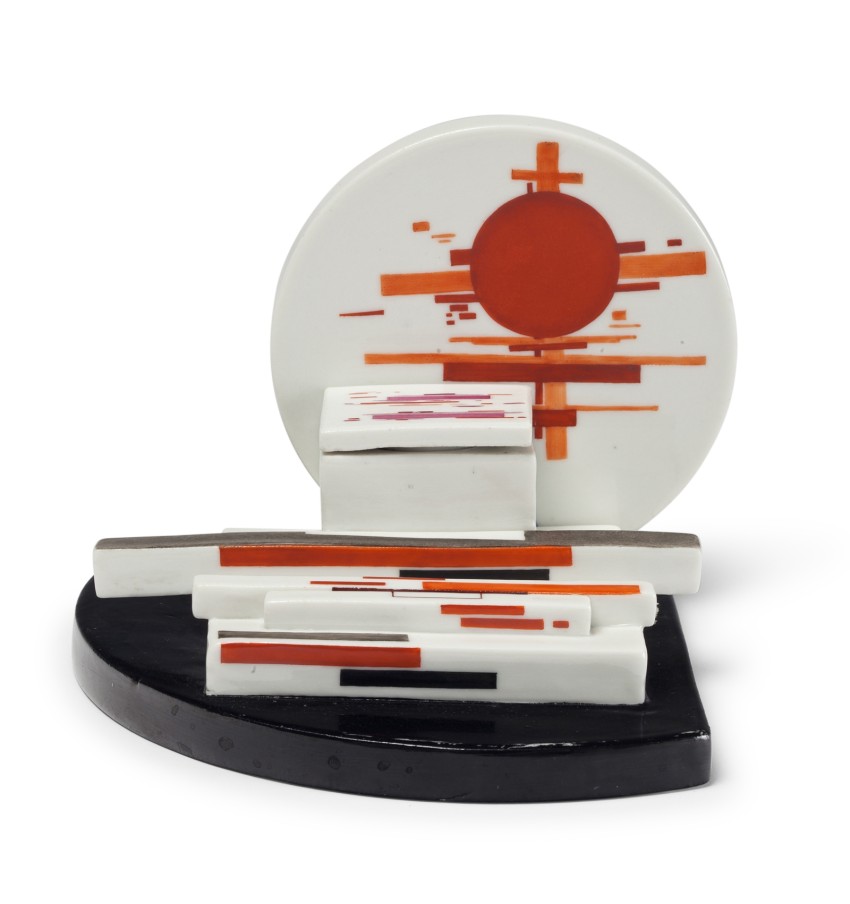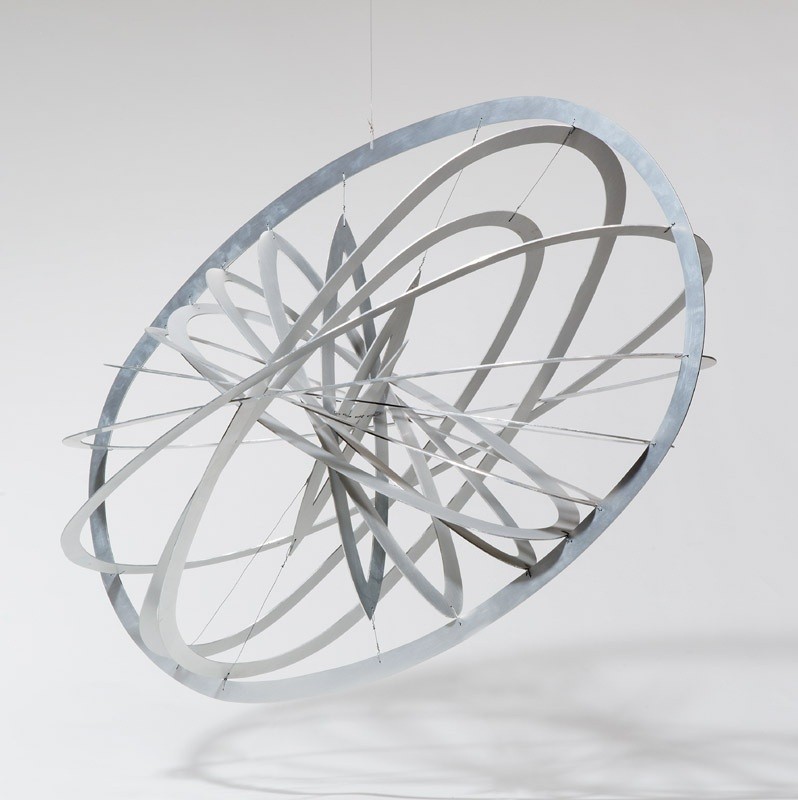Russian Avant Garde
Around 1907 – stimulated by the European neighbours – an artists’ movement formed in Russia, which strove for a renewal of specifically Russian art. The term Russian Avant Garde comprises several tendencies of which the most influential were Suprematism and Constructivism.
The artist and theoretician Kasimir Malevich developed an abstract design vocabulary that strove to represent a pure and universal energy. He named this art ‘Suprematism’ derived from the Latin superlative ‘supremus’ meaning ‘the highest’. Malevich and his followers did not merely restrict their design to paintings and sculpture, but also included everyday objects.
The Suprematist Writing Set designed by the Malevich student Nikolai Suetin is regarded as a highlight of this utility art. He designed and painted the porcelain himself.

Aleksandr Rodchenko, on the other hand, is considered to be one of the most significant representatives of constructivism. Constructivism refers to a geometric-technical method of design that is not abstracted from objects or living beings but is built up (constructed) purely from surfaces, lines, and basic mathematical forms.
